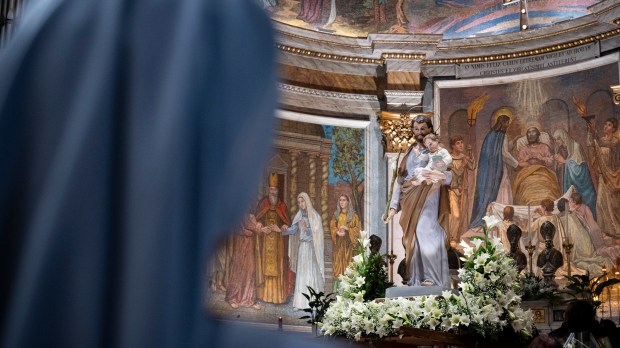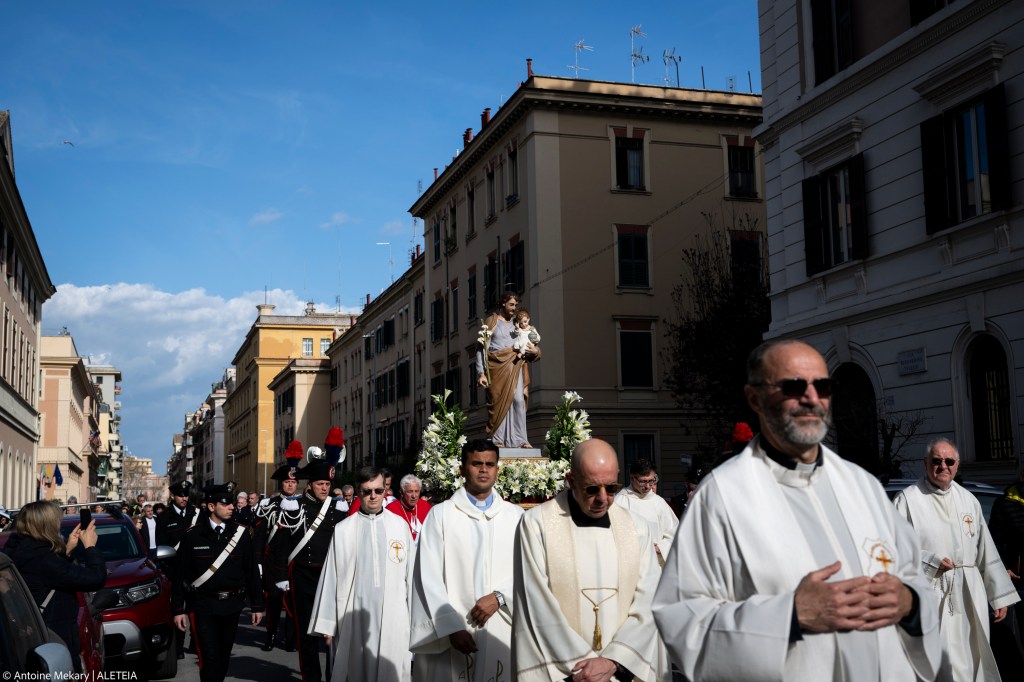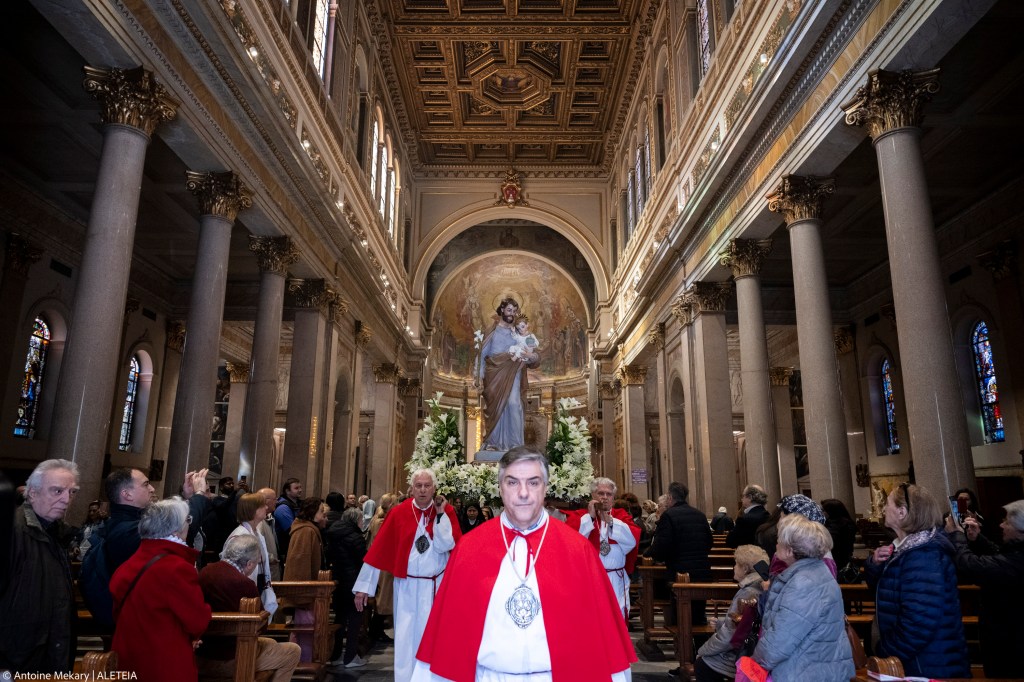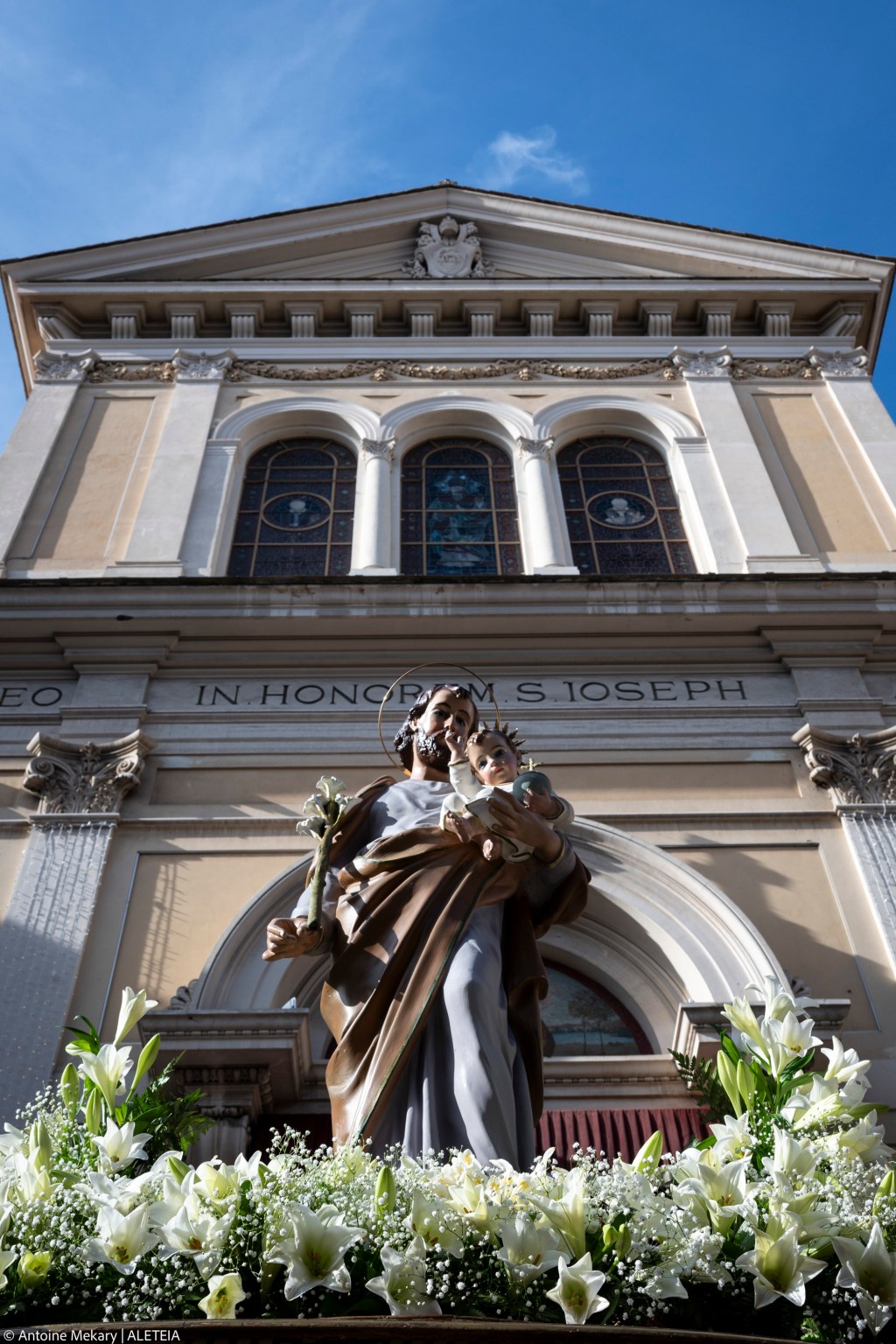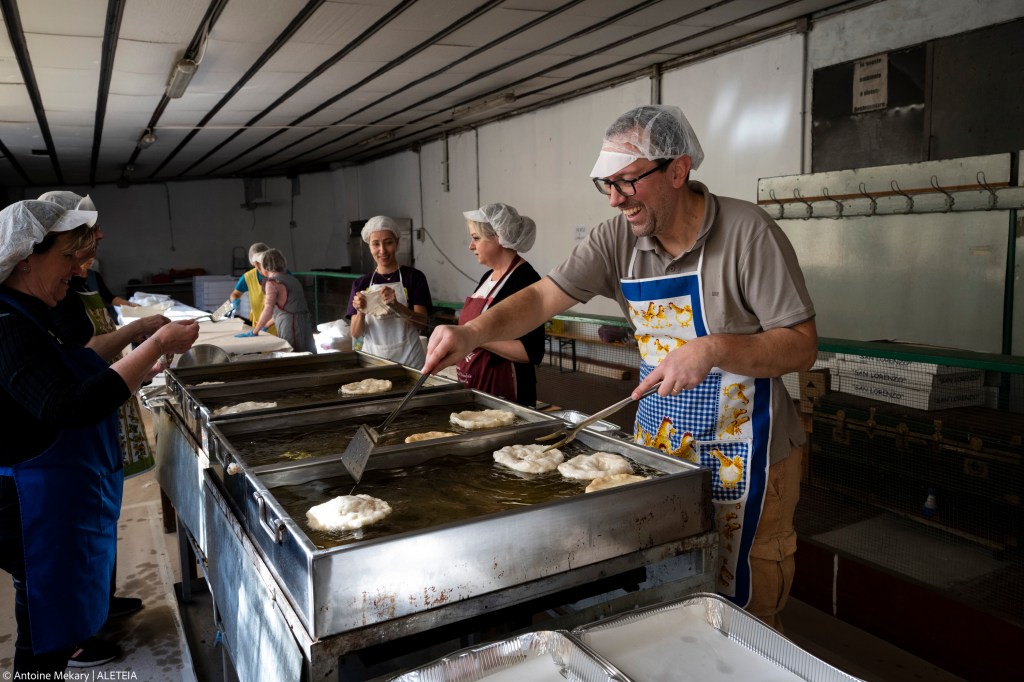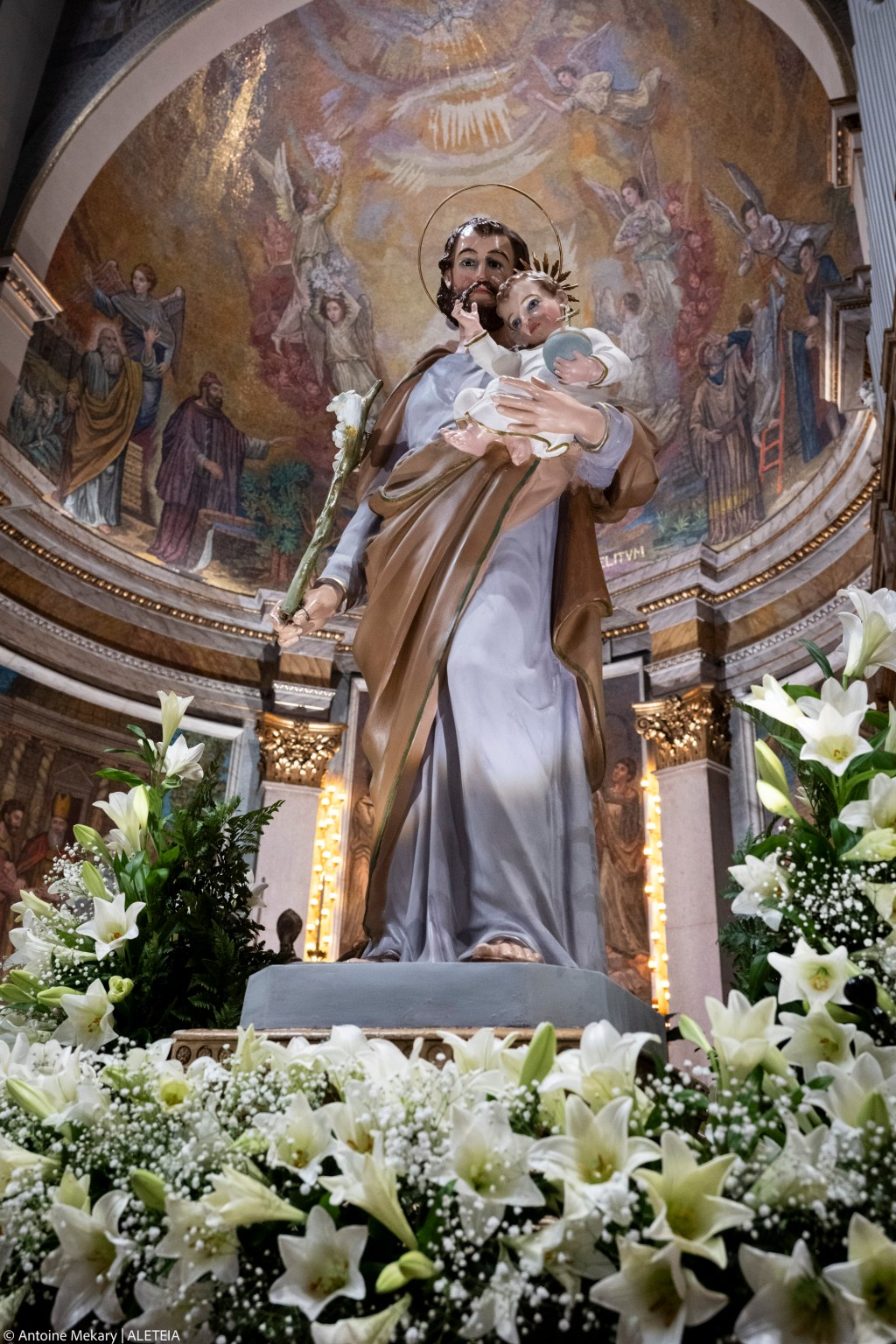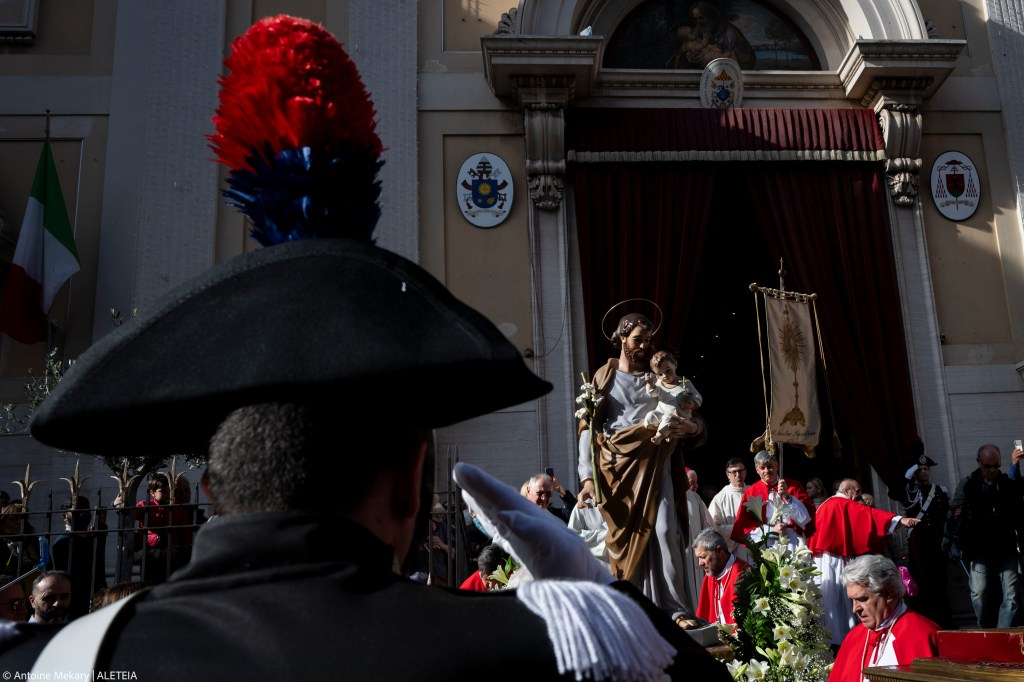Lenten Campaign 2025
This content is free of charge, as are all our articles.
Support us with a donation that is tax-deductible and enable us to continue to reach millions of readers.
“Viva San Giuseppe! Viva!” The cries echo throughout the crowded street as a statue adorned with white lilies comes out of the Basilica of San Giuseppe al Trionfale (St. Joseph at Trionfale), located in Rome around a 10-minute walk from the Vatican. Although it is the middle of the day and week on March 19, 2024, people of all ages and from all over the city gather for the only procession dedicated to St. Joseph in Rome that is done on his actual feast day.
Although there are other churches in the Italian capital also dedicated to St. Joseph, the Basilica of San Giuseppe al Trionfale, run by the Congregation of the Servants of Charity, is a point of reference in the city for this saint’s feast day.
The Basilica had in fact been organizing events and activities since March 9 to prepare for the day, which included a procession and Mass celebrated by Swiss Cardinal Emil Paul Tscherrig, Apostolic Nuncio Emeritus to Italy and San Marino. Food stands, charity raffles, and more, add to the festive atmosphere.
Aleteia looks into the Roman and Italian traditions that recall, highlight, and celebrate what St. Joseph is known for and his importance.
“St. Joseph touches people because he was a man of faith, a man who trusted God completely and allowed Him to overturn his life,” said Father Tommaso Gigliola, the parish priest of the Basilica. “He is important because he took care of Jesus and Mary, the two greatest gifts that God could give to humanity.”
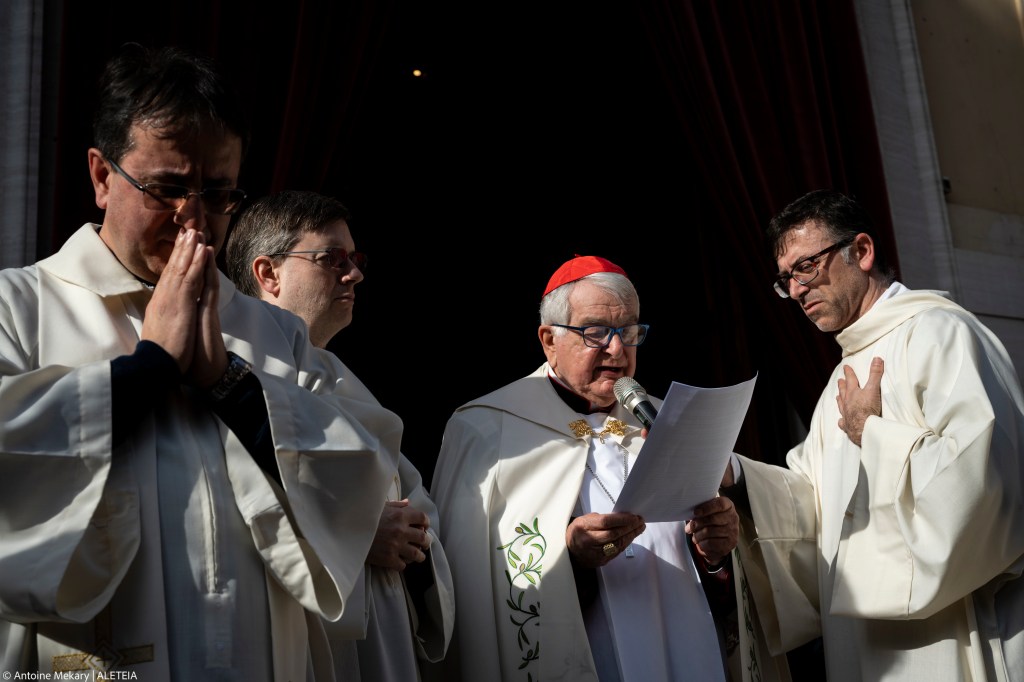
Celebrating all fathers in Italy
St. Joseph’s paternal dimension is one of the aspects most highlighted in Italy on his feast day. In fact, Father’s Day is celebrated on March 19th exactly because it is the feast of St. Joseph, as is the case in other traditionally Catholic countries such as Spain.Until 1977, March 19 was even a national holiday in Italy.
One of the participants to the procession, Antonello, explained that the paternal aspect of the day was the reason he was attending. “My father was called Joseph, I am a dad myself and my son attends the school [attached to the Basilica] of San Giuseppe al Trionfale,” he explained, as he waited with the family’s pet, a French bulldog named Giulietta, for the event to start. At the entrance of the church, another man held a baby in his arms with a shirt that said “I love Dad.”
“I am convinced that what Jesus said, what he did, his way of reasoning, thinking and praying — he owes a lot of it also to St. Joseph because he was educated by him,” said Father Gigliola.
St. Joseph “is a reminder of the vocation of fatherhood and its great responsibility and effort. […] He can help us rediscover the vocation of fatherhood where the father is a point of reference like St. Joseph was for the Holy Family, especially at the beginning during difficult periods and trials. To be a father like St. Joseph who did everything for the happiness of his family.”
Fried pastries named after St. Joseph
Another popular symbol in Rome related to St. Joseph highlights his service to his family. On March 19, bakeries in the capital sell fried pastries with cream inside called St. Joseph’s “zeppole” and “bignè.” The Rome municipality’s website explains that one of the possible explanations for these sweets’ name is because legend says that after the Holy Family fled to Egypt, St. Joseph started selling sweets to support them.
“Today families are so shattered, so relying on St. Joseph also means wanting to reconstruct our families in the love and happiness of God,” said Angela, a religion teacher and parish member who was assisting in the procession.
Although there are other explanations, such that the pastries originate from ancient Roman pagan holidays, today they are named after St. Joseph and are typically given to fathers.
As the procession walked through the streets, a group of moms had stayed back in the courtyard of the Basilica to fry the pastries that would then be sold after the liturgical celebrations.
St. Joseph’s bread
Another symbol related to St. Joseph is a blessed loaf of bread that is handed out throughout the day on March 19. At the Basilica of San Giuseppe al Trionfale it was given out during the various Masses celebrated.
“St. Joseph’s bread reminds us of what is necessary sustenance for man. Even in the Lord’s Prayer we ask that God not allow us to lack our daily bread. […] This we ask of St. Joseph, that what is necessary for the sustenance of body and soul may never be lacking in our families,” said Father Gigliola.
“Bread is also the fruit of man’s labor, so it is also a reference to this important dimension of our lives that St. Joseph protects,” he continued.
St. Joseph, who was a carpenter, is in fact the patron saint of workers. “Then lastly, St. Joseph’s bread teaches us to trust in God and in Providence, as he trusted the Lord completely despite all the trials and difficulties.”
This custom is present in many areas in Italy, especially in the southern regions such as Sicily or Apulia, where whole tables or altars are decorated with food in honor of this saint. In Sicily also a specific type of bread is often made in various shapes such as his staff or an M for Mary. These traditions have also spread to other countries, especially through Italian immigrant communities, such as those in the United States.
“It is nice to remember St. Joseph at the dinner table because he is the saint of simplicity, of the family, so the bread indicates this being together as a family,” said Angela, who had gotten one of the blessed loafs to bring home.
The patron of a happy death
In its celebrations, the Basilica of San Giuseppe al Trionfale also highlighted another aspect of St. Joseph, as the patron saint of a happy death. The Basilica is run by the Congregation of the Servants of Charity but is also assisted by the Pious Union of the Transit of St. Joseph, as both were founded by the Italian priest St. Luigi Guanella.
The Pious Union is an association of faithful of all vocations that focuses on praying for those who are dying and promoting St. Joseph’s patronage for a good death.
In fact the Basilica of San Giuseppe al Trionfale had organized a Mass at noon, before the procession, in order to pray for all those those who belong to the Pious Union, including those who have passed. The Basilica also includes a mosaic that shows the transit of St. Joseph towards heaven, exactly to highlight this aspect.
“Death scares everyone, but in the end death is what all men share and at the same time it is the moment in which we feel our deepest poverty and fragility. Facing death, we are all the same. In that moment St. Joseph accompanies us, protects us and gives us the hope that it is not the end of everything, as death is the door that opens to Heaven and eternal life,” said Father Gigliola.
